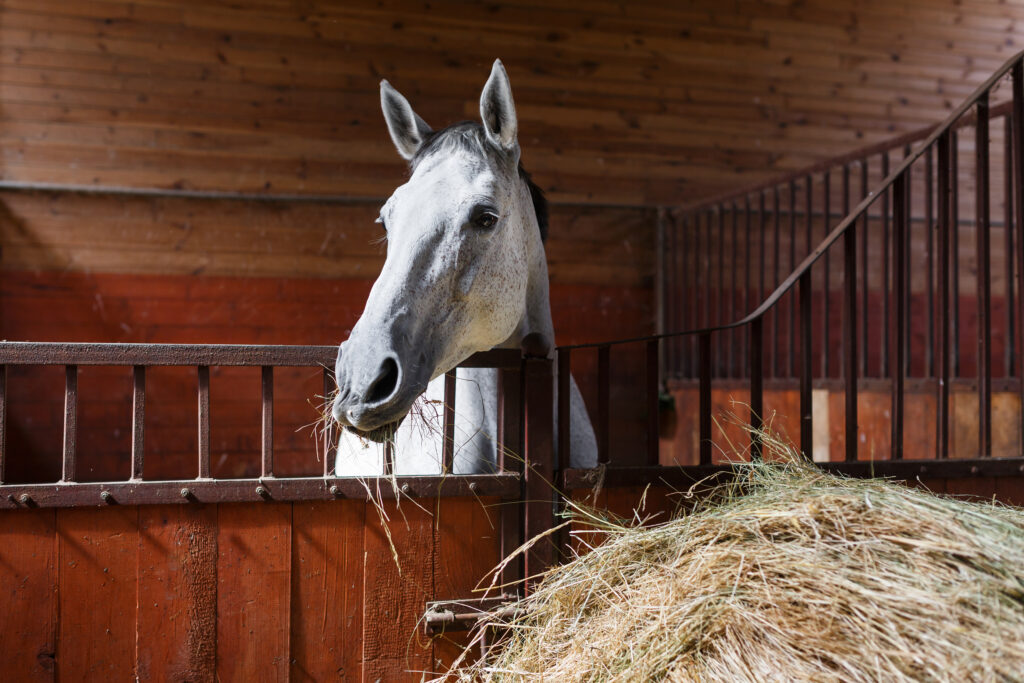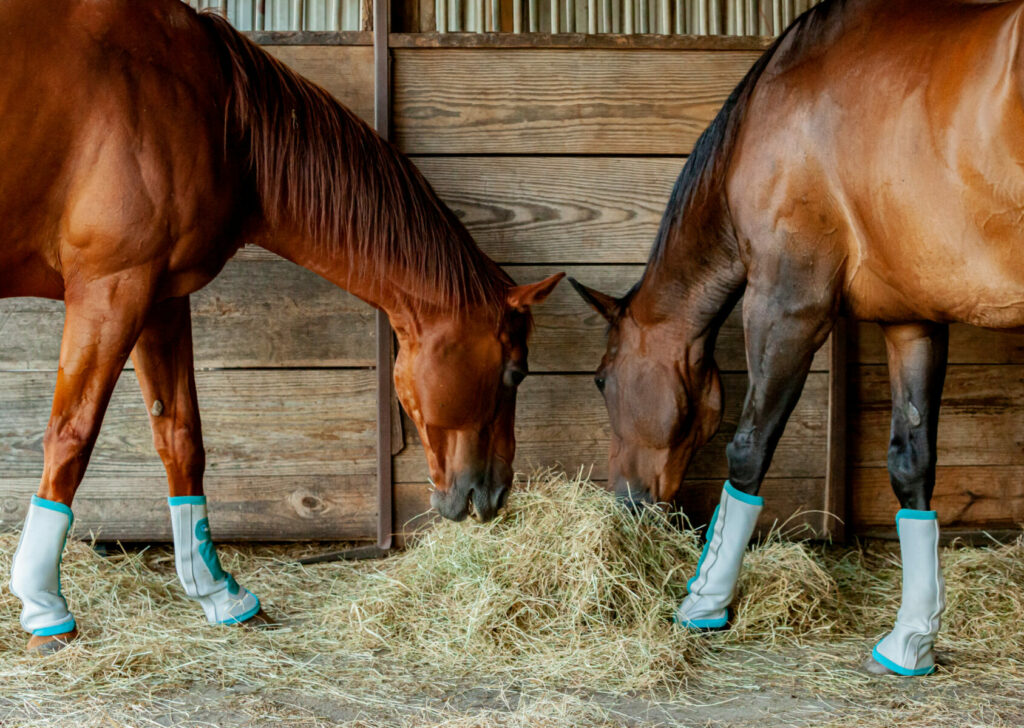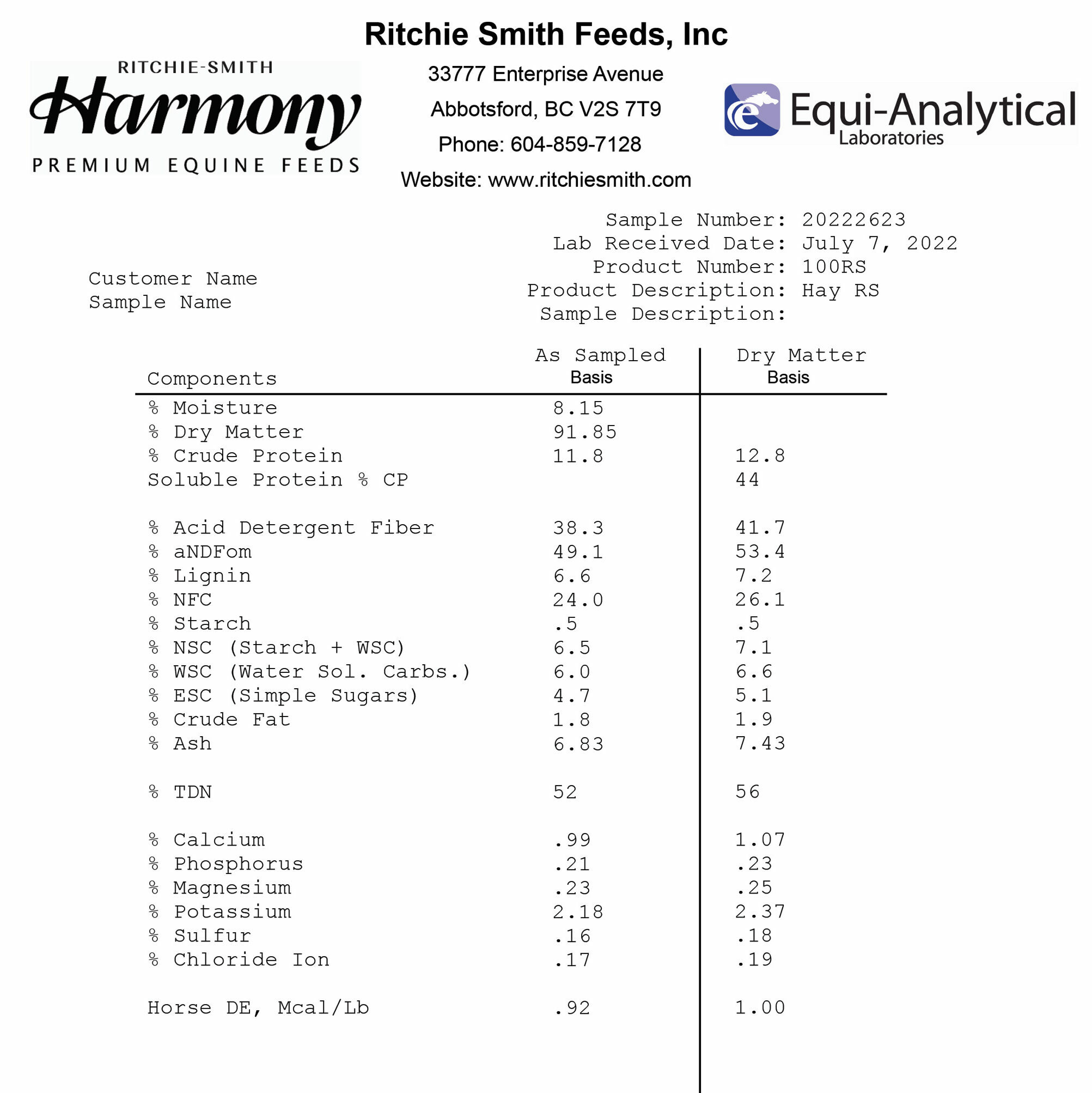
Article
Understanding Your Hay Analysis
When selecting a hay for your horse, the options may seem overwhelming – or perhaps very limited, depending on the year and your location.
When selecting a hay for your horse, the options may seem overwhelming – or perhaps very limited, depending on the year and your location. Your region may offer several types of forages to choose from: alfalfa, orchard grass, timothy, fescue, and the list goes on. We have compiled our top criteria for selecting suitable hay for your horse and how to interpret your hay analysis.
Free Hay Testing
NOW UNTIL SEPTEMBER 30, 2023: FREE Equine NIR Analysis with each purchase of any Harmony Premium Equine product. See full details.
Considerations for Selecting Horse Hay:
- What are your goals for your horse? Current weight, body condition, age, activity level and health status are determining factors in what type of hay is most suitable for your horse.
- What does the hay look like? Green in colour indicates high vitamin content, but sun-bleached hay may still be quite nutritious. If the hay was rained on in the field the color will be faded and some nutrient loss may have occurred; however, if it was baled dry it may still be a nutritious option for some horses. Bright green leafy hay is indicative of a higher energy and protein content. Stalky or coarse fibre hay will be lower in energy and protein often a suitable choice for idle horses. In general, not all weeds are anti-nutritive, some are toxic; and many are unpalatable. Therefore, it is important to be aware of the toxic weeds in the region in which you purchase hay from, and be able to recognize these when dried in hay.
- What does the hay smell like? Hay should smell fresh and sweet, not moldy. If it smells moldy, there likely is visible mold somewhere in the bale. Moldy hay is a concern for the respiratory tract and may cause digestive upsets – it should not be fed to horses.
- How is the hay stored? Storing hay out of the weather in a clean and dry environment is crucial to preserving the quality and freshness. Mold or spoilage can occur when hay is exposed to wet conditions.
- Is there a hay analysis available? Ideally hay will be sold with an analysis so that you can more accurately determine the suitability for your horse. Unfortunately, this is not standard practice, and it is often up to the buyer to obtain an analysis after the hay has been purchased. Below we outline what to look for if you are able to have a hay analysis done and what some of the values mean.
I Have a Hay Analysis… Now What?

At first glance a hay analysis can look like an overwhelming amount of information on one page, but if you know what to look for you’ll find it is not so bad. As an example, have a look at the below analysis and then read on to learn how to properly interpret the results.

To start, you will notice there are two columns of numbers; one titled “As Sampled Basis” and one titled “Dry Matter Basis.” The “As Sampled Basis” is the hay as it is stored and fed to your horse, it includes a “Moisture” value. For hay, this value should be below 12%. The corresponding “dry matter” should be above 88%. Caution should be taken when moisture values are higher than 15%. This hay is “wet” and may pose fire hazard risks, as well as suffer from mold contamination.
As moisture varies across hay sources and cuts, the “As Sampled Basis” values do not allow you to compare different hays directly, therefore direct your focus to the “Dry Matter” column. This column indicates the nutritive value without moisture, standardizing the values and allowing you to compare to other hay analyses.
When interpreting the remainder of the hay analysis, consideration should be taken for the breed, activity level, age and body condition of the horse the hay is intended for. The following ranges are typical values or recommendations for average adult horses at maintenance or in light work. If your horse is not within this category (ie: stallions, horses in moderate/hard work, etc), please do not hesitate to contact us for further information. We can help you to interpret your analysis for your specific horse and their individual needs.
Nutrient Values
Crude Protein
This fluctuates based on the type of forage (ie: grass, alfalfa, timothy, orchard grass, etc) and will vary based on maturity level and growing conditions. Grass hay generally has a crude protein content between 8-14%; while alfalfa will have a higher crude protein content ranging between 15-25%. The amount of protein required by adult horses will vary depending on their work load, but horses usually require 10-14% CP in their overall diet. Lactating mares, horses in intense exercise programs and stallions have a higher protein requirement. However, over feeding protein to horses that are easy keepers (or not in hard work) may lead to unwanted weight gain.
Fibre Values
These are represented by ADF (acid detergent fibre) and aNDFom (neutral detergent fibre) and will fluctuate based on type of forage, maturity and growing conditions. The fibre values increase as the forage matures; as fibre values increase the energy and protein content typically decreases. Typical ADF values range from 30-45%, where over 45% may represent forage that is less palatable and very mature. Typical NDF values will be 45-65%, where over 65% may become less palatable and thus not supply enough energy to support a healthy body condition.
Horse DE – Digestible Energy
Standing for “Digestible Energy,” Horse DE is represented in MCal (mega calories) per lb. The energy density of a forage also fluctuates with forage maturity and species type. Energy requirements for horses are dependent on work load, body condition, body weight goals (gain or loose weight), and other metabolic needs. The average digestible energy value of horse quality hay is between 0.85-1.05 Mcal/lb, which should be sufficient for many adult horses in light work. Horses in moderate to hard work, lactating mares, and stallions have higher energy needs, and likely need supplementation in the form of grain or a pelleted complete horse feed. Evaluating your horses’ body condition is one indicator if the energy being supplied by the diet (hay) is meeting your horses’ needs or not.
Macro Mineral Values
Calcium, phosphorus, magnesium, potassium, and chloride are included in the NIR hay analysis package. The calcium level will be lower in grass forage compared to alfalfa forages. Potassium and phosphorus will vary with type of forage and fertilizer application. Most macro mineral needs are met by forage, however sometimes there are mineral imbalances or situations where horses will require more calcium (ie: lactating mares) or electrolytes, such as when in hot environments and/or heavier workloads. In these cases, discuss appropriate supplementation strategies with a qualified equine nutritionist.
Sugar Content or NSC Value of the Hay
This is a topic worthy of its own discussion, but we will briefly outline the general recommendations regarding sugar intake. The ESC (ethanol soluble carbohydrates) are the simple sugars within forage. WSC (water soluble carbohydrates) are simple sugars (ESC) plus fructans. Sugars (including fructans) and starch are energy sources for plants and will vary depending on drought/weather conditions, stage of maturity and time of day. NSC (non-structural carbohydrates) is the sum of WSC + starch. For horses with metabolic challenges, we recommend a forage with less than 12% NSC. For horses in acute phase laminitis, or who are very NSC sensitive, we would recommend forage with less than 10% NSC. The sugar content can be reduced, by soaking hay for a couple of hours. The water will leach some of the sugars (and other nutrients) from the hay, which may be a strategy for reducing sugar intake. Ensure the water that the hay was soaked in is not fed with the hay (it contains the residual sugars).
Little and Often…
Providing access to forage often throughout the day is ideal for promoting gut health and natural behavior. Horses have evolved to consume small frequent meals, so utilizing slow feed nets or other strategies to provide forage frequently will go a long way in promoting gut health for your horse.
Selecting the right hay for your horse can feel overwhelming at times, but hopefully this gives you a good starting point. If you have any questions or would like specific diet advice for your horse, please do not hesitate to reach out to us at anytime!
Happy Riding!

Have a Specific Question?
Our dedicated team of expert nutritionists are here to help. Send us your questions.
Ask Our Experts




 Premium Poultry Feed
Premium Poultry Feed
 Premium Equine Feed
Premium Equine Feed
